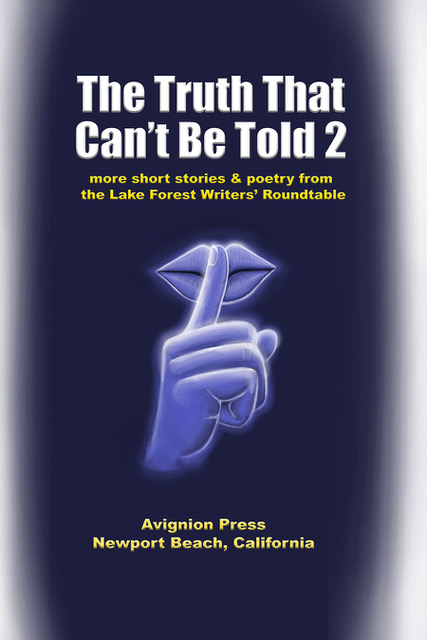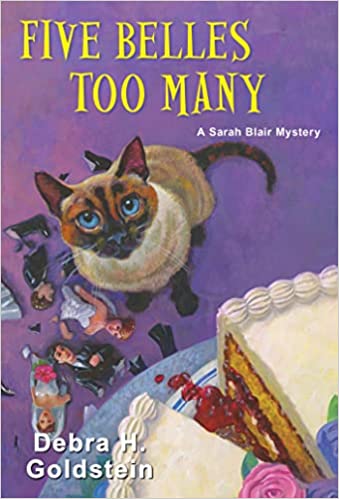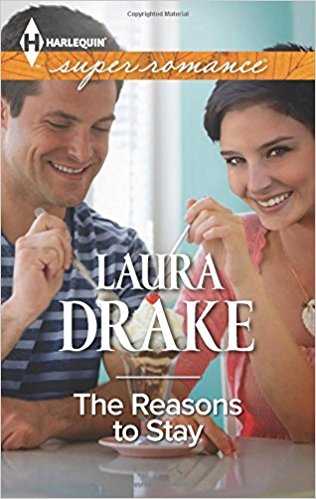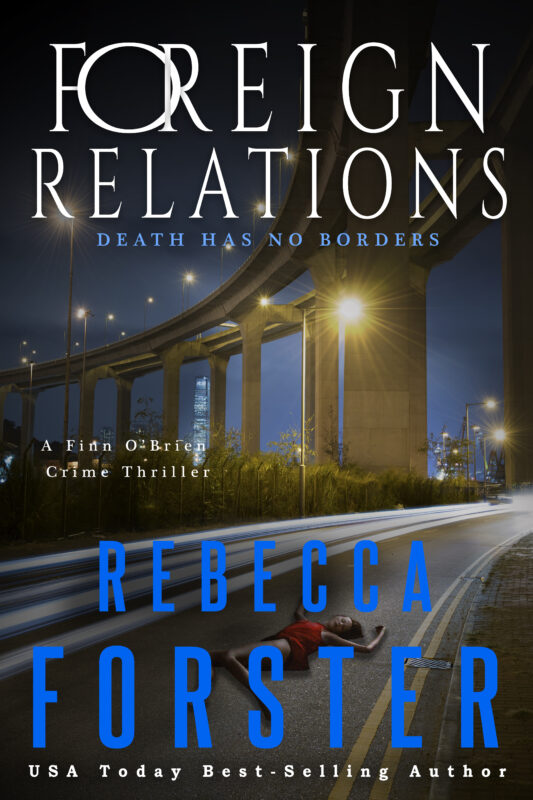As Time Goes By…we must never forget by Jina Bacarr
November 11, 2009 by A Slice of Orange in category Archives tagged as Casablanca, Confessions of a Podcast Goddess, Veterans Day, World War IIThere’s a scene in the classic film Casablanca when Résistance fighter Victor Laszlo (Paul Henreid) tells the musicians in Rick’s Cafe to play La Marseillaise after Major Strasser leds a group of Nazi soldiers in a rendition of “Die Wacht am Rhein” (Watch on the Rhine), a German nationalist song. It’s a powerful message about the stirring emotions music brings out in all of us–especially when freedom is at stake.
Interesting, but a similar incident happened two days after the Germans marched into Paris on June 14, 1940 in a restaurant in Montmartre called La Crémaillère. (Who can forget Rick’s words to Ilsa in Casablanca when he says, “The Germans wore gray, you wore blue…”)
An Englishman ordered a drink at the bar in this classic restaurant built in the early 1900s for himself and his companion, an American lady. She noticed a piano in the corner and started playing God Save the King to bolster the courage of her British friend.
The Nazis immediately told her it was verboten.
“America is not at war with Germany,” she said calmly and continued playing. The Germans were perplexed and angry until she explained to them that she was playing an American song called “My Country ’tis of Thee.”
Same tune, different words, but the power of playing the song in defiance remains. According to eyewitness reports, the Germans apologized, bowed, clicked their heels and left.
Let us not forget on this Veterans’ Day all the brave soldiers, both military and civilian, who have dared to stand up against tyranny.
As the heroine in my World War II novel, Cleopatra’s Perfume, Lady Eve Marlowe says, “I survived, dear reader, angry and filled with the passion to save lives and end this terrible war. The obsession that was never far from my mind comes sharply into focus. Now I will use that passion against them. The Nazis. The urge to be part of the machine to defeat the enemy is irresistible to me.”
Jina Bacarr is also the author of The Blonde Geisha , Naughty Paris, Tokyo Rendezvous, a Spice Brief, and Spies, Lies & Naked Thighs
February 2010: meet The Blonde Samurai
“She embraced the way of the warrior. Two swords. Two loves.â€
What’s in a job? by Abby Gaines
November 9, 2009 by A Slice of Orange in category Writing tagged as Abby GainesOne of the fun things about writing novels is the different careers and jobs I get to explore as an author, all in the interest of research. A well-chosen job adds affects kinds of aspects of a character—the pressures they face, their likes and dislikes, their ambitions, their education, their skills…. Often I choose a job for my character seemingly out of thin air, then discover that choice says something vital about my character.
The Plot Thickens by Linda O. Johnston
November 6, 2009 by Linda O. Johnston in category Pets, Romance & Lots of Suspense by Linda O. Johnston tagged as Berkley Prime Crime, Kendra Ballantyne, Linda O. Johnston, Pet-Sitter Mysteries, Silhouette NocturneIn my September blog, I asked people for ideas of what they would like me to address in my posts on A Slice of Orange. My apologies, but I didn’t use those ideas last month because I’d just attended the West Hollywood Book Fair and was jazzed about it, so that was what I talked about in my post.
But now, here’s a topic that one of the commenters mentioned in September: plotting. Holly wrote: “My biggest issue is keeping the plot/subplots simple and not too many. It is like ideas pop into my little head and I add them instead of filtering. How do you filter through them to keep the storyline flowing?â€
That can be a problem, Holly. I’ve found it particularly affects me when I’m writing some of my Kendra Ballantyne, Pet-Sitter mysteries. Kendra is my alter ego, and she keeps throwing ideas into my mind about what’s happening in her life while I’m writing about her.
What I generally do, though, is tell her that I need to stick to the synopsis I always create before I start writing one of her stories. I don’t do detailed outlines or scene lists any longer, but I have found that if I go off on a tangent that isn’t in my original synopsis I generally have to remove it.
That’s not to say you can’t save it for another book. I certainly do! That’s such a great thing about computers. I always keep lists of ideas in the same folders as the stories I’m working on. Then, when it’s time to plot the next story and create its synopsis, I generally can pick and choose from ideas I’ve already jotted down.
Of course, everyone writes differently. Not everyone can work with a synopsis or outline. There are a lot of seat-of-pantsers out there, too–and I’m sure it’s more difficult for them to ignore new ideas as they crop up.
Another caveat here. (Yes, I’m also a lawyer, so I use legalese at times!) Even if you are someone who writes a synopsis, outline or scene list first, if something comes to you that you haven’t already included and it’s a real doozy that you think readers will love, you don’t always have to save it for the next book. But think it through before you run with it. It may make what you’re doing a whole lot harder to finish–especially if it’s also interrupted by other ideas!
So–was this helpful? Any other things you’d like for me to address in the future?
Linda O. Johnston
http://www.lindaojohnston.com/
http://www.killerhobbies.blogspot.com/
Linda O. Johnston is the author of 16 romance novels and several novellas, including a Nocturne Bites that is also in a current print anthology AWAKENING THE BEAST, with more Nocturnes upcoming. She also writes the Kendra Ballantyne, Pet-Sitter mystery series from Berkley Prime Crime and is also working on the spin-off Pet Rescue series.
Happy Halloween!
October 31, 2009 by A Slice of Orange in category Archives tagged as Halloween, storyStrolling through the neighborhood, the decorations were impressive and I wanted to share them with you. As I looked at the houses, I realized the focus was on setting the tone, first impressions–just like the opening of a story.
While some of these entryways may over promise in terms of delivering something similar inside, don’t you just want to check it out?
Here this real estate agent is clearly calling attention to the key element they want you to focus on (Yes, the agent’s name really is Bubes. Perhaps it’s pronounced in a special way):
Here a daunting uphill climb is accompanied by ghosts and an organist, luring you to the top…
It’s all about the entry way:
Step right in…
Where are you going, and what makes you want to go there?
This was the “piece of resistance” (never have been able to understand how that phrase works in French–shouldn’t it be irresistible?). Quite an entrance, isn’t it? I like the skeletal remains on the pathway. The witch is almost too scary…
And here there’s room for some added support (don’t they look like a ghostly version of Rodin’s The Burghers of Calais?), directing you too that compelling opening. Nice, eh?
If your story were a house, would you want to go inside? What does the entry way look like? Think about it….
Isabel Swift
The Production of a Book: Wresting with Revisions
October 28, 2009 by A Slice of Orange in category ArchivesLike most writers, I like to think that my words are perfect exactly the way I put them on the page. However, as a working writer, I know that there will be changes made to this manuscript before it hits the shelves as a finished book.
A manuscript goes through several incarnations before the book is ready to be printed.
Revisions – Editor indicates changes that need to be made to make the story stronger. This could involve subplots, characters, imbalances (such as need more sexual tension here and more suspense there, but cut this scene over here), and anything else that seems to jar the reader out of the story. Author needs to make these changes (along with line edits sent back on the original manuscript) and send whole new manuscript back to editor.
Important things about revisions:
Revisions need to be on time so that the production schedule is not held up
The author usually gets paid upon Delivery and Acceptance of the revised manuscript (see your contract for exact terms)
Copyedits – The revised manuscript is assigned to a copyeditor, usually freelance. The copyeditor’s job is to identify continuity problems (Her dress was blue at the beginning of the scene but now it’s red), as well as question research items and also format the manuscript in the House Style. Every publishing house has a House Style that provides consistency throughout all their books. House style addresses things like spelling (is it gray or grey), punctuation (in a series, is there a comma before “and†or not?) and so forth.
In the copyediting phase, the manuscript is still in hard copy format, just like when you sent it in. The author gets the copyedited manuscript and needs to address comments by the copyeditor, as well as answer questions posed by him/her. You can still, at this phase, add pages, paragraphs and sentences if necessary. The author can also STET changes made by the copyeditor with which she does not agree. STET basically means “ignore†in publishing lingo and is sometimes an author’s favorite word! After this, it goes to the printer.
Page proofs/galleys – This is the part of production where things are pretty much written in stone. The author gets a copy of the “uncorrected†page proofs, and her job is to go through and look for typos and printer errors. After the corrected page proofs go back, the next time the author sees the manuscript, it is in printed book form.
Now that you understand the steps involved in producing a book, let’s talk about the subject of this post: revisions.
After I’ve submitted a manuscript, a revision letter arrives from my editor, along with a line-edited manuscript. The length and complexity of the revision letter entirely depends on what needs to be done. Each work stands on its own, and the writer who thinks she knows it all, might be in for a rude awakening come revision time!
By the same token, the writer who gets that rare comment from the editor—No Revisions—falls into a panic even while floating on Cloud Nine. Here’s an example of typical internal dialogue of an author who has been told her book needs no revisions: No revisions? Is she sure? Has she ever edited a book by herself before? There has to be something!
I’ve written twelve historical romances for Avon Books over the last eleven years. Book number eleven, TO RUIN THE DUKE (Avon, June 2009) was a No Revisions book. I had just been assigned a new editor, and while I had worked with her peripherally while she had been the assistant to my former editor, she had never edited one of my books before. Upon receiving the email about no revisions, I picked up the phone and called her in a panic. It was approximately 6pm New York time, but she was still in the office and answered the phone. She assured me that No Revisions was not a mistake. And it wasn’t that the book needed NO revisions, just that the changes were so small that I could do them during the copyediting phase.
This, for some reason, made me feel a lot better. There were still changes to be made. Whew!
Then you have the opposite end of the scale—Massive Revisions. I turned in book number twelve, thinking that after No Revisions on the last book, surely there would be little or none on this book. WRONG. This book needed some major revising. Just a more heroic hero and some conflict and motivation changes. Just the core of the whole romance. No big deal, right?
It took me a good three weeks to rewrite a lot of the book, which was necessary due to the way I decided to handle the hero and conflict/motivation issues. And what that taught me was that even after eleven published books and nominations for a Golden Heart, RITA and Holt Medallion, I still had things to learn.
And as long as you keep learning, you will keep growing as a writer.
Affiliate Links
A Slice of Orange is an affiliate with some of the booksellers listed on this website, including Barnes & Nobel, Books A Million, iBooks, Kobo, and Smashwords. This means A Slice of Orange may earn a small advertising fee from sales made through the links used on this website. There are reminders of these affiliate links on the pages for individual books.
Search A Slice of Orange
Find a Column
Archives
Featured Books
THE TRUTH THAT CAN’T BE TOLD BOOK 2
Unrequited love, quiet shame, guttural fear are the truths we hide from the world…often from those we love the most.
More info →FIVE BELLES TOO MANY
When Sarah Blair’s mother participates in a reality show competition for brides in Wheaton, Alabama, things get a little too real as a murderer crashes the wedding party . . .
More info →GAME TOWN
Follow Skylar Drake to Hollywood parties where the forbidden is accepted and games played are for keeps.
More info →FOREIGN RELATIONS
A foreign woman is dead, two countries want her forgotten. Detective Finn O'Brien wants justice.
More info →Newsletter
Contributing Authors
Search A Slice of Orange
Find a Column
Archives
Authors in the Bookstore
- A. E. Decker
- A. J. Scudiere
- A.J. Sidransky
- Abby Collette
- Alanna Lucus
- Albert Marrin
- Alice Duncan
- Alina K. Field
- Alison Green Myers
- Andi Lawrencovna
- Andrew C Raiford
- Angela Pryce
- Aviva Vaughn
- Barbara Ankrum
- Bethlehem Writers Group, LLC
- Carol L. Wright
- Celeste Barclay
- Christina Alexandra
- Christopher D. Ochs
- Claire Davon
- Claire Naden
- Courtnee Turner Hoyle
- Courtney Annicchiarico
- D. Lieber
- Daniel V. Meier Jr.
- Debra Dixon
- Debra H. Goldstein
- Debra Holland
- Dee Ann Palmer
- Denise M. Colby
- Diane Benefiel
- Diane Sismour
- Dianna Sinovic
- DT Krippene
- E.B. Dawson
- Emilie Dallaire
- Emily Brightwell
- Emily PW Murphy
- Fae Rowen
- Faith L. Justice
- Frances Amati
- Geralyn Corcillo
- Glynnis Campbell
- Greg Jolley
- H. O. Charles
- Jaclyn Roché
- Jacqueline Diamond
- Janet Lynn and Will Zeilinger
- Jeff Baird
- Jenna Barwin
- Jenne Kern
- Jennifer D. Bokal
- Jennifer Lyon
- Jerome W. McFadden
- Jill Piscitello
- Jina Bacarr
- Jo A. Hiestand
- Jodi Bogert
- Jolina Petersheim
- Jonathan Maberry
- Joy Allyson
- Judy Duarte
- Justin Murphy
- Justine Davis
- Kat Martin
- Kidd Wadsworth
- Kitty Bucholtz
- Kristy Tate
- Larry Deibert
- Larry Hamilton
- Laura Drake
- Laurie Stevens
- Leslie Knowles
- Li-Ying Lundquist
- Linda Carroll-Bradd
- Linda Lappin
- Linda McLaughlin
- Linda O. Johnston
- Lisa Preston
- Lolo Paige
- Loran Holt
- Lyssa Kay Adams
- Madeline Ash
- Margarita Engle
- Marguerite Quantaine
- Marianne H. Donley
- Mary Castillo
- Maureen Klovers
- Megan Haskell
- Melanie Waterbury
- Melisa Rivero
- Melissa Chambers
- Melodie Winawer
- Meriam Wilhelm
- Mikel J. Wilson
- Mindy Neff
- Monica McCabe
- Nancy Brashear
- Neetu Malik
- Nikki Prince
- Once Upon Anthologies
- Paula Gail Benson
- Penny Reid
- Peter Barbour
- Priscilla Oliveras
- R. H. Kohno
- Rachel Hailey
- Ralph Hieb
- Ramcy Diek
- Ransom Stephens
- Rebecca Forster
- Renae Wrich
- Roxy Matthews
- Ryder Hunte Clancy
- Sally Paradysz
- Sheila Colón-Bagley
- Simone de Muñoz
- Sophie Barnes
- Susan Squires
- T. D. Fox
- Tara C. Allred
- Tara Lain
- Tari Lynn Jewett
- Terri Osburn
- Tracy Reed
- Vera Jane Cook
- Vicki Crum
- Writing Something Romantic
Affiliate Links
A Slice of Orange is an affiliate with some of the booksellers listed on this website, including Barnes & Nobel, Books A Million, iBooks, Kobo, and Smashwords. This means A Slice of Orange may earn a small advertising fee from sales made through the links used on this website. There are reminders of these affiliate links on the pages for individual books.


















































